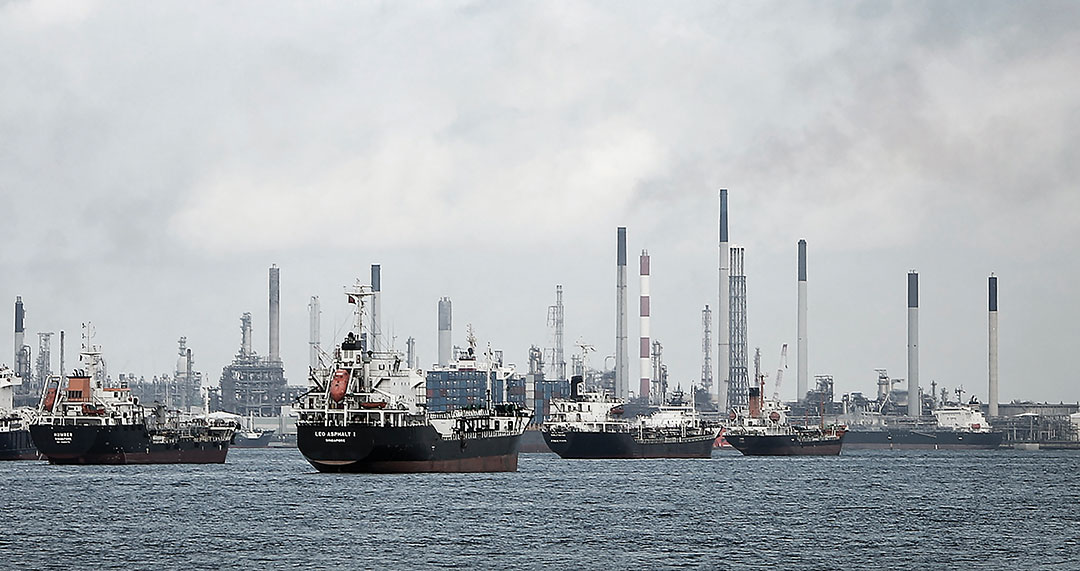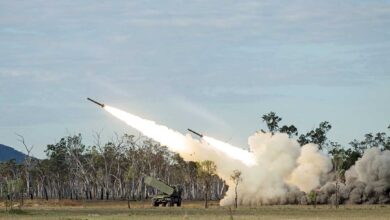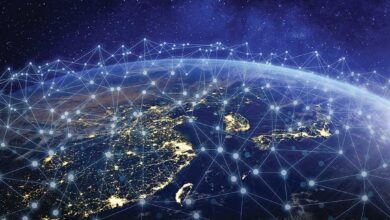Canal Conundrum

Thailand could sacrifice its sovereignty for questionable gains from Chinese–built waterway
FORUM Staff
China is pushing for construction of a man-made waterway that cuts through Thailand to connect the South China Sea with the Andaman Sea, linking the Indian and Pacific oceans and slashing transit times between them by two to three days. The proposed Kra Canal, or Thai Canal, as it has been officially renamed by the Thai government, would stretch more than 100 kilometers across the Kra Isthmus and replace trade routes through the Malacca Strait and Singapore. It could be built within five to 10 years of the plan’s approval, proponents said.
The idea of building such a water route dates to the 17th century, but it is now being discussed as part of China’s One Belt, One Road (OBOR), which concerns many of Thailand’s neighbors. China would likely fund and ultimately control the canal, estimated to cost more than U.S. $30 billion to build.
Fear is spreading across the Indo-Pacific region that the canal represents another building block in China’s master plan to dominate the region, although Chinese and Thai officials have denied such a project is under serious consideration. The canal would provide strategic military advantages for China, analysts contend, beyond enhancing its ability to project naval power to the Andaman Sea and the eastern Indian Ocean.

“In theory, the Kra Canal could benefit India and the region by taking pressure off the overcrowded Malacca Straits,” a senior Indian naval commander told the Business Standard, an Indian English-language daily newspaper, in April 2018. “In practice, there’s reason to worry about what Chinese involvement in this project will mean for the balance of power in the Indian Ocean.”
About 33 percent of global trade, or nearly 84,000 ships, passes through the Malacca Strait annually, as does about 80 percent of China’s oil supply from the Middle East and Africa, according to the Seatrade Maritime News website. The new sea lane, which would be 450 meters wide and 25 meters deep, would cut shipping routes between the Indian Ocean and Pacific Ocean by 1,200 kilometers and accommodate the world’s largest oil tankers. The World Bank forecasts that traffic in the Malacca Strait will exceed its maximum annual capacity of 122,000 ships by 2020.
The canal would offer China a military solution for what its former President Hu Jintao referred to as the “Malacca dilemma.” That is, the new route would offer an alternative to the Malacca Strait route, which could be closed to China by other regional powers if a conflict arose in the Indo-Pacific.
Moreover, China would predictably militarize the canal, the senior Indian naval commander told the Business Standard. China militarized many of its infrastructure investments in the Indo-Pacific, despite repeated denials of its intentions and ongoing activities to build military facilities and install military equipment on such sites. Prime examples include the artificial features China built in recent years in the South China Sea, replete with air and naval bases, and various dual-use port projects from Gwadar in Pakistan to Djibouti in Africa for which China is using sovereign debt traps to gradually usurp control. The proposed canal could also benefit Thailand militarily, as well as China, by enabling naval forces to transit between Thailand’s east and west coasts, military analysts said.
Opaque Support
Thailand’s government has continued to claim that it has no plans to support the project. “There are still other problems in the area, therefore they must be prioritized,” Thai government spokesman Lt. Gen. Sansern Kaewkamnerd said in February 2017. He added that Prime Minister Prayut Chan-o-cha has insisted his government does not have a policy on the project, according to The Straits Times, an English-language daily newspaper in Singapore.
However, Chinese and Thai entities signed a memorandum of understanding in May 2015 to advance the project, according to the online magazine The Diplomat, despite denials of official government involvement at the time. China notoriously uses purportedly private Chinese companies to run government-funded infrastructure projects. The China-Thailand Kra Infrastructure Investment and Development company, based in Guangzhou, China, and Asia Union Group, headed by former Thai Premier Chavalit Yongchaiyudh, signed the agreement. In addition, a feasibility study was completed in 2016, and Chinese entities have surveyed a proposed route, according to media accounts.
The Thai Canal Association for Study and Development, an organization formed by retired Thai generals and chaired by former Thai Army chief Gen. Pongthep Thesprateep, is leading the drive for the project inside Thailand, according to an August 2017 report on the Nikkei Asian Review website. In late March 2018, the group called for a national committee to study the U.S. $30 billion project, which would mainly be funded through China’s OBOR. A series of conferences in Bangkok orchestrated by the Thai-Chinese Cultural and Economic Association, which is closely tied to Beijing, and the European Association for Business and Commerce in September 2017 and February 2018 also have helped heat up interest in the canal.

Concern that Chinese control of the project could erode Thailand’s sovereignty is widespread, however, even if engineers determine it to be technically feasible.
“The history of the Panama and Suez canals shows, despite the unquestionable economic advantages of a canal, one country’s funding of its construction on the territory of another country usually leads to the spread of significant influence by the first country,” Gen. Ivica Kinder, director of Croatia’s Military Security and Intelligence Agency, told the Business Standard.
Moreover, China’s management of infrastructure projects has historically proven subpar compared to that of the U.S., France and other established democracies.
Questionable Track Record
China has attempted myriad other such projects around the world that have had negative consequences for participating nations. The planned U.S. $40 billion canal in Nicaragua that would rival the Panama Canal is a leading example. Nicaragua gave Chinese businessman Wang Jing and his company exclusive rights to build an interoceanic canal and its supporting projects in 2013 and nothing has materialized, according to media reports. In a deal that many legal experts say violated the country’s national sovereignty, Nicaraguan President Daniel Ortega ordered his loyalist congress to rubber-stamp legislation that handed over the country’s rights to the canal for 50 years to Wang, but no construction has begun, according to a July 2017 account in The Miami Herald newspaper.
Instead, observers worry Nicaragua has been the victim of a massive corruption plot. “There are fears that Wang could now use his 50-year concession to sell the rights to ports, airports and tourism complexes, with zero benefit for the Nicaraguan people. It would be a textbook case of how authoritarian regimes often become the most incompetent, and the most corrupt,” journalist Andres Oppenhiemer reported in The Miami Herald.
Countries are increasingly wary of how China’s predatory financing of many infrastructure projects works out for recipient nations even when the projects are built. In country after country, where China loaned money to governments for such projects, China ends up controlling the natural assets and a chunk of the country’s sovereignty. China loaned billions of dollars to Djibouti, for example, and then used this leverage to lease land for a military base there. Similarly, China’s backing of Sri Lanka’s Hambantota port ended up unfavorably for the “partner” nation. Sri Lanka was forced to give China control of the port in December 2017. A plan to create a new Chinese-controlled business district to service Sri Lanka’s nearby port of Colombo has also proven to benefit China at the seeming expense of Sri Lankan citizens.
If successful, a project of this size could add from 1 to 2 percent to Thailand’s gross domestic product. China would supply most of the labor, however. This coupled with the fact that it’s unclear how much of the project’s supplies will be locally sourced casts doubt on the amount of the resulting economic activity that would directly benefit Thailand, analysts said.

Such deals typically begin with financing arrangements that set up the borrower nation for failure by creating unmanageable debt programs and yielding scant gains for citizens, such as jobs and economic windfalls that China promises. Beijing “encourages dependency using opaque contracts, predatory loan practices, and corrupt deals that mire nations in debt and undercut their sovereignty, denying them their long-term, self-sustaining growth,” then-U.S. Secretary of State Rex Tillerson explained on March 6, 2018.
“These experiences should serve as a warning that the OBOR is essentially an imperial project that aims to bring to fruition the mythical Middle Kingdom. States caught in debt bondage to China risk losing both their most valuable natural assets and their very sovereignty,” Brahma Chellaney, a professor at the New Delhi-based Center for Policy Research, wrote in a December 2017 article on the Project Syndicate website.
China’s predation in Sri Lanka becomes more interesting if the Thai Canal project goes forward. Sri Lanka’s Chinese-controlled ports would benefit from the construction of the canal, as David Brewster wrote in an August 14, 2017, article on the Lowy Institute’s website, because Sri Lanka “lies astride the busy sea lanes of the northern Indian Ocean, making it an obvious choice for a new shipping hub.”
The canal plan also features the creation of a U.S. $22 billion special economic zone that includes building cities and artificial islands to bolster Thailand’s infrastructure in the region, the Nikkei Asian Review reported. Thailand would then incur almost double the original debt burden to bring the project to fruition.
Additional Risks, Obstacles
China’s track record on delivering large infrastructure projects is sketchy at home and abroad. More than half of such projects run by China were poorly managed, a 2016 study by Oxford University’s Said Business School found. The projects entailed cost overruns, a lack of economic benefit to the community, poor returns for investors and generally produced low-quality products, according to the study, which examined 95 large Chinese road and rail projects and compared them to hundreds of infrastructure projects run by established democracies.
“From our sample, the evidence suggests that for over half of the infrastructure investments in China made in the last three decades, the costs are larger than the benefits they generate, which means the projects destroy economic value instead of generating it,” said Dr. Atif Ansar, lead author of the report, “Does Infrastructure Investment Lead to Economic Growth or Economic Fragility? Evidence from China,” published in the Oxford Review of Economic Policy.
China often pushes for political deals that lack transparency in the contracting process and give its state-owned enterprises exclusive bidding rights to projects, which contributes to poor management. In Kenya, Chinese companies delivered the high-profile Standard Gauge Railway to connect Kenya’s largest port city, Mombasa, to its capital, Nairobi, at a cost of U.S. $5.6 million per kilometer, which was roughly triple the international standard and four times the original estimate, according to a report by the Economist Intelligence Unit.
China’s focus is typically on geopolitical value of overseas projects rather than their economic value, according to a May 2017 report in the Diplomat, an online magazine, by Hong Kong-based journalist Spencer Sheehan.
“China’s drive to build its political influence in Africa and Asia through infrastructure has resulted in faulty power plants in Botswana and loss-making railway projects in Laos,” he wrote.
Poorly selected and poorly executed projects also increase the chance that a debtor nation will default on the loans by China and cede control of the assets to China, Sheehan explained.
The Oxford University study also found that investing in large-scale, physical infrastructure projects may not be a viable development strategy for other developing countries in the first place. “It is a myth that China grew thanks largely to heavy infrastructure investment,” Ansar and his colleagues concluded.
Moreover, any economic gains from foreign infrastructure projects are usually mostly enjoyed by the Chinese firms that participate. In the case of the Thai Canal, several Chinese firms are lobbying the Thai government to build the canal. A leading proponent is Longhao, the firm that built the artificial islands in the South China Sea, according to the Business Standard. Longhao envisions bringing 30,000 Chinese workers to Thailand to handle construction work.

Worldwide, Chinese projects are notorious for putting environmental concerns second to Beijing’s geopolitical ambitions. The canal project could hurt Thailand’s tourism industry and damage its fisheries, some critics have purported. “The proposed canal route would run past tourist areas in the Andaman Sea that generate about 40 percent of the total revenue from the tourism industry,” said Thon Thamrongnawasawat, a marine expert from Bangkok’s Kasetsart University, the Business Standard reported. The route would pass popular tourist destinations Phuket and Krabi islands, according to The Nation, an English news site in Thailand.
Other military experts are also worried construction of the canal could divide the country in half and, because of its location, increase tensions in southern Thailand. The waterway would create a geographic split between Buddhist regions and mainly Muslim provinces in the south. “The construction of the Kra Canal would further exacerbate the volatile region, creating further divisions within the country,” Rhea Menon, a researcher at Carnegie India, wrote in the April 6, 2018, issue of The Diplomat.
Opportunity Costs
To ensure regional stability in the Indo-Pacific, Thailand must carefully weigh the advantages and disadvantages of such an infrastructure project. Moreover, the economic advantages of the canal have been overstated by its proponents, some analysts contend. The ramifications of the canal in the broader security picture must be more thoroughly examined, military experts from the region warn.
From a purely economic perspective, the project may simply redistribute revenue and traffic in the region and not increase overall economic value, some leading financial analysts contend. Other more cost-effective alternatives such as a land bridge by rail over Thailand’s Kra Isthmus should also be thoroughly evaluated, they suggested.

Construction of the canal could also be detrimental to Thailand’s relationship with other members of the Association of Southeast Asian Nations, including Indonesia, Singapore and Malaysia, which would lose shipping business to Thailand. Although it may take a decade for the supporting facilities to be built, Singapore, for example, could eventually lose between 30 to 50 percent of its shipping business, according to some estimates.
“The thought of losing business to the Kra Canal is troubling for the states along the Strait of Malacca — Malaysia, Indonesia and Singapore. Bangkok’s relations with these countries will figure prominently in its decision over whether to follow through with the project,” according to a November 2017 analysis by Stratfor, a digital publication that provides a geopolitical intelligence platform.
China will benefit the most from such a canal because it will build it and control it, most observers and analysts agreed. Although China is likely the only investor that could bring the project to life, according to Stratfor, “it has kept its interest in the new waterway as quiet as possible to avoid jeopardizing its ties with other countries in the region.”






A fascinating discussion is worth comment. I think that you ought to write
more on this issue, it might not be a taboo matter but usually people do not talk about these subjects.
To the next! Best wishes!!